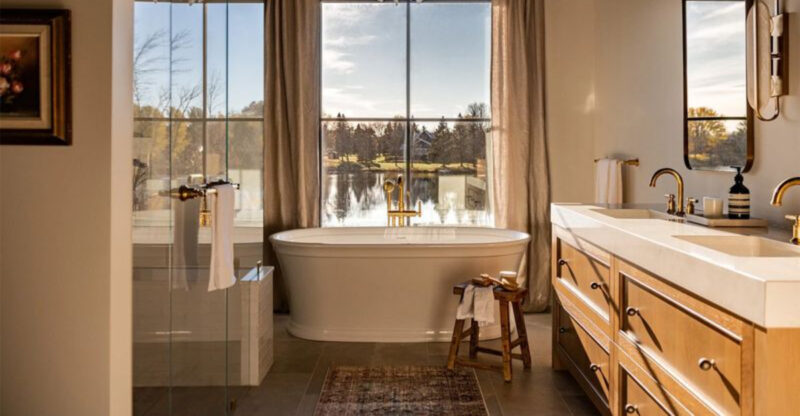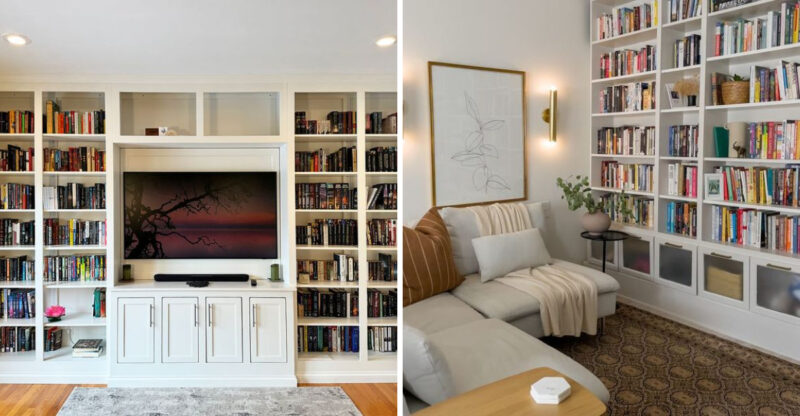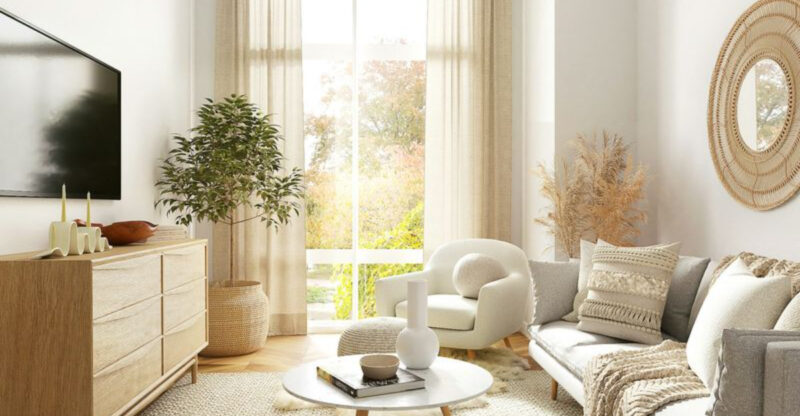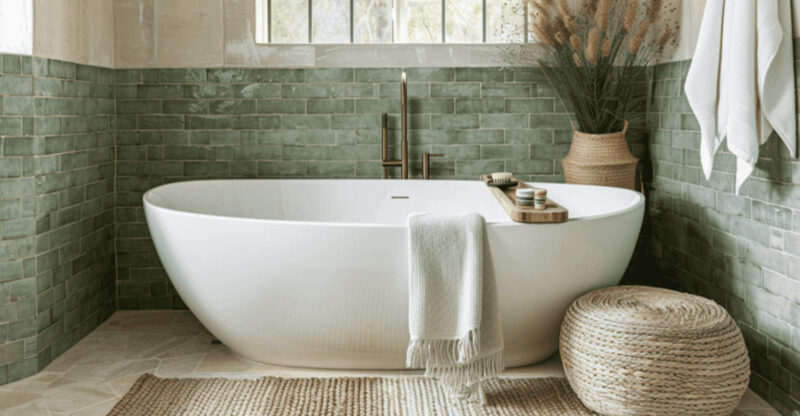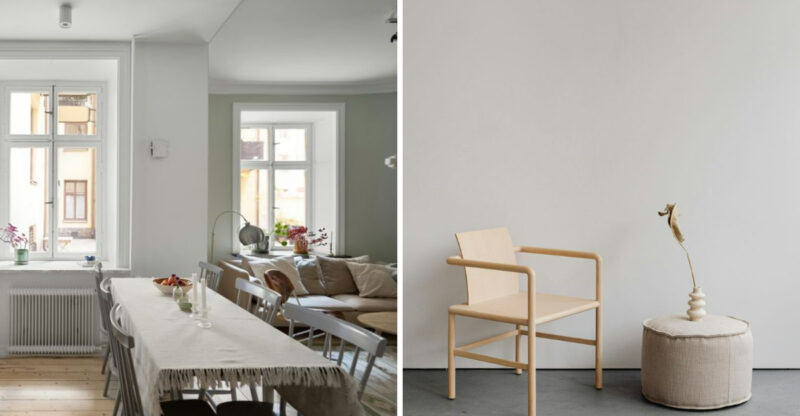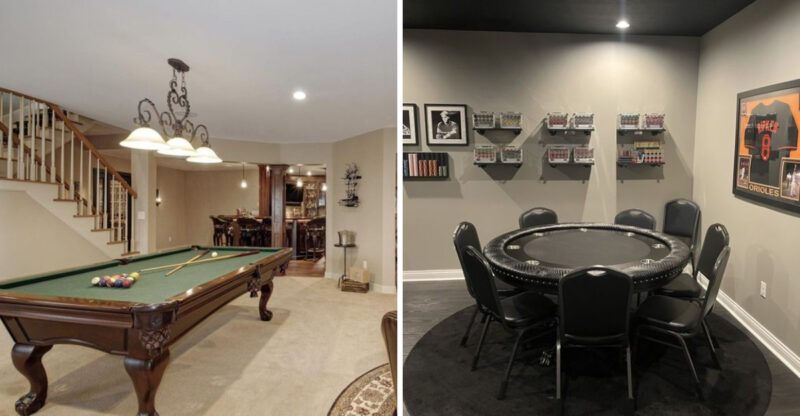9 Oregon Craftsman Living Rooms With Original Woodwork
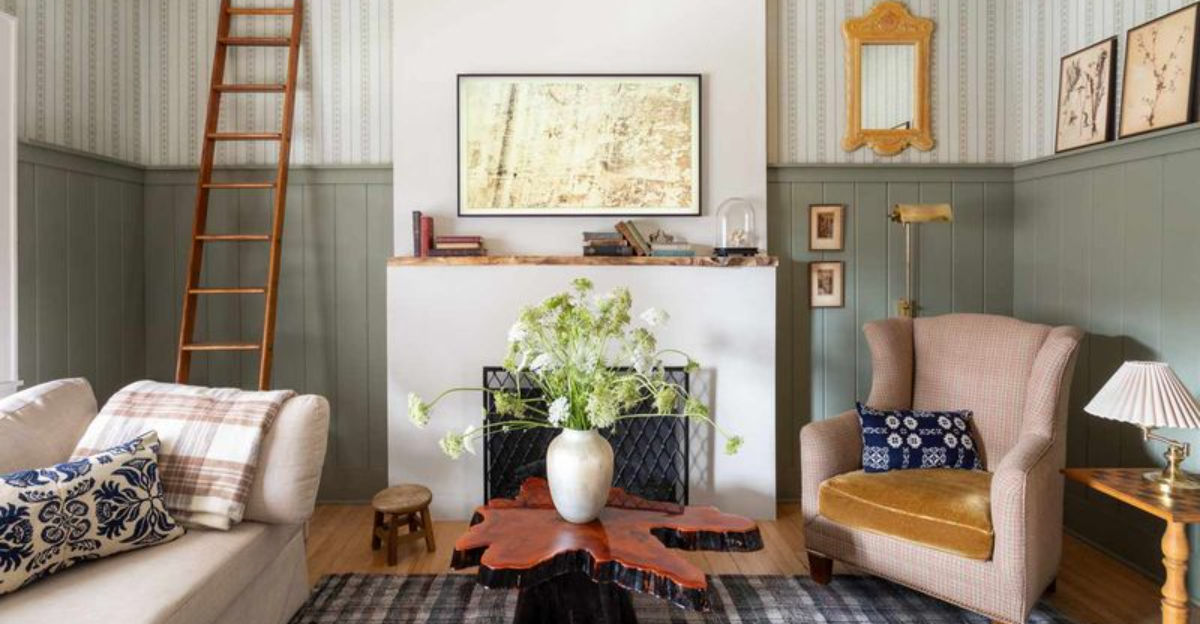
Thick beams overhead, polished floors underfoot, and built-ins shaped by hand give these living rooms a character that feels unmatched today. In Oregon’s historic Craftsman homes, original woodwork turns everyday spaces into something lasting and personal.
Door frames carry the mark of the carpenter’s tools. Mantels and wainscoting glow with a century of care. These rooms balance beauty and function, creating places where history and comfort live side by side.
1. Stained Wood Beams And Coffered Ceilings
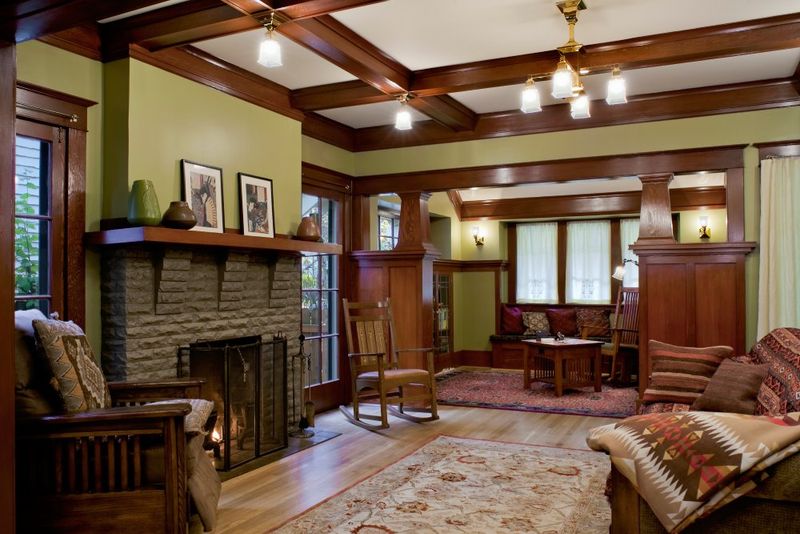
Walking into a Oregon craftsman with original ceiling beams feels like stepping into a warm embrace. The deep chestnut tones overhead draw your eyes upward, showcasing intricate joinery work done by skilled hands decades ago.
Homeowners treasure these architectural features that frame conversations below. Modern designers charge thousands to recreate what these homes have preserved naturally through generations of careful stewardship.
2. Built-In Bookcases And Window Seats
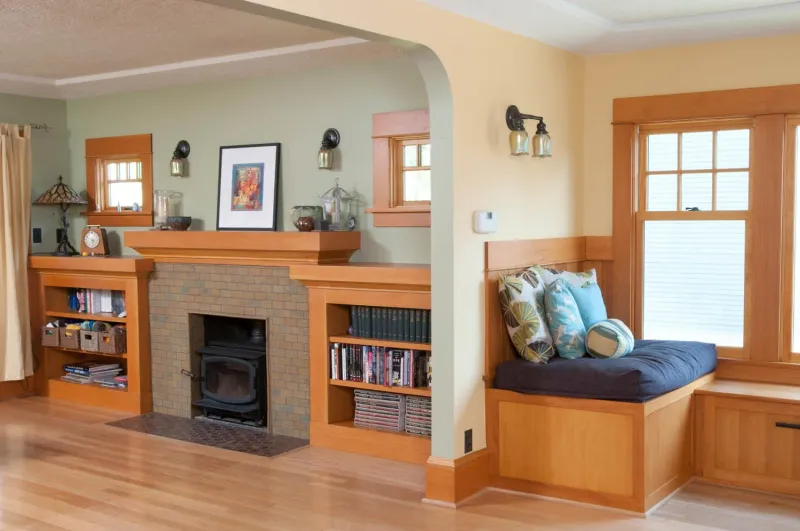
Corner bookcases frame many Oregon craftsman fireplaces, their glass-fronted cabinets displaying treasures while lower drawers hide everyday items. The craftsmanship reveals itself in dovetailed corners and hand-cut moldings.
Nearby window seats invite afternoon reading sessions. Generations of families have curled up with books in these sunny nooks, feeling the solid reassurance of quarter-sawn oak beneath cushions while gazing out at gardens beyond.
3. Original Wood Trim Around Doors And Windows
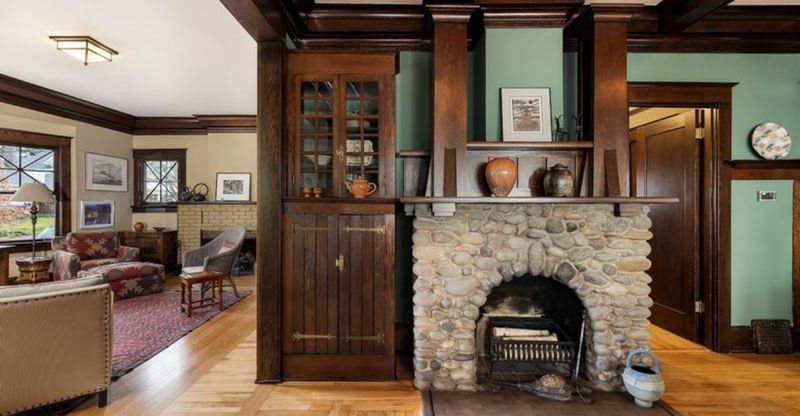
Substantial door casings stand as frames around everyday passages in these historic homes. Unlike today’s mass-produced trim, these hand-milled pieces often reach 5-6 inches wide, creating dramatic transitions between rooms.
Window surrounds feature similarly impressive proportions. The wood – typically oak, fir, or sometimes even walnut – has developed a patina over decades that new materials simply cannot replicate. Each piece tells the story of Oregon’s lumber heritage.
4. Brick Fireplaces Framed By Oak Mantels
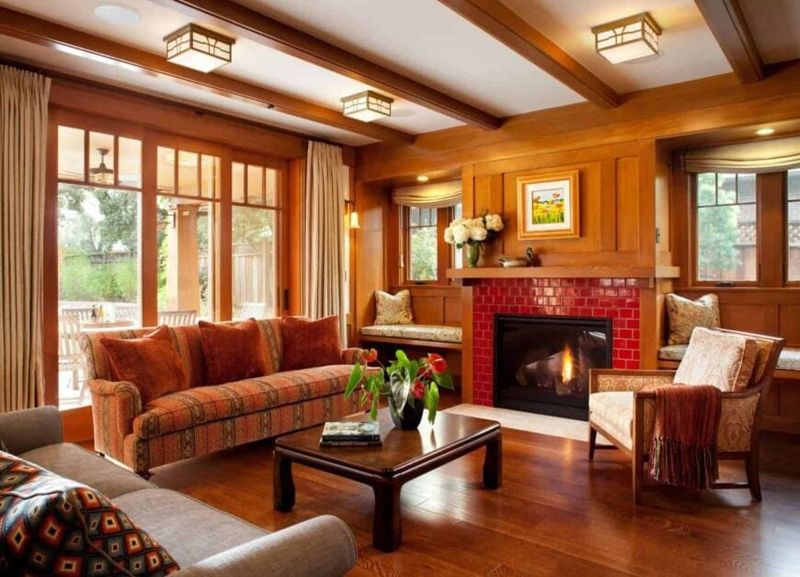
Heart of every craftsman living room, these fireplaces combine artisan brickwork with substantial wood mantels. Some feature distinctive green Grueby tiles or handcrafted copper hoods that have developed beautiful verdigris patinas.
The oak mantels themselves become family galleries. Photos, heirlooms, and seasonal decorations find their place atop these solid shelves. Below, many homes preserve original andirons and tools that have served through decades of winter evenings.
5. Arts And Crafts Style Furniture With Wood Detailing
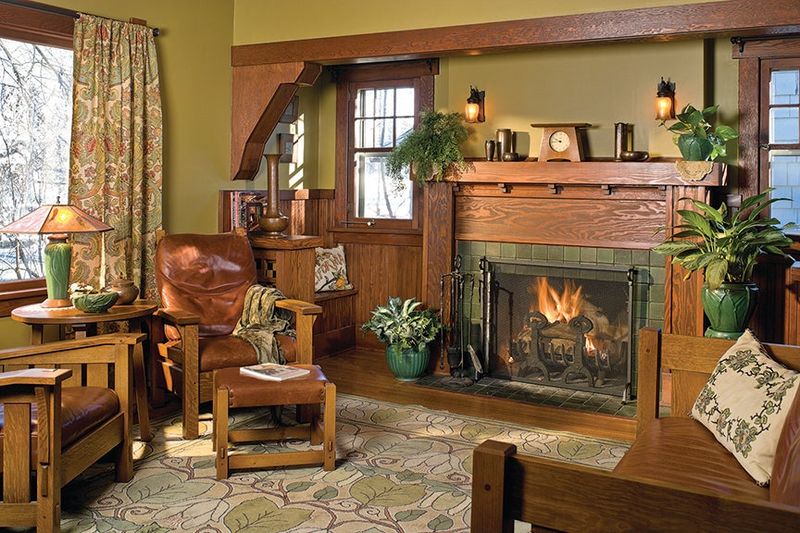
Mission-style sofas with exposed oak arms complement these authentic spaces perfectly. Their clean lines and honest construction mirror the architectural elements surrounding them.
Rocking chairs with spindle backs invite relaxation by the fire. Many Oregon families have preserved original Stickley or Limbert pieces that were purchased when the homes were built. Even reproduction pieces find harmony here, continuing the tradition of visible joinery and natural materials.
6. Wainscoting And Wood Paneling For Warmth
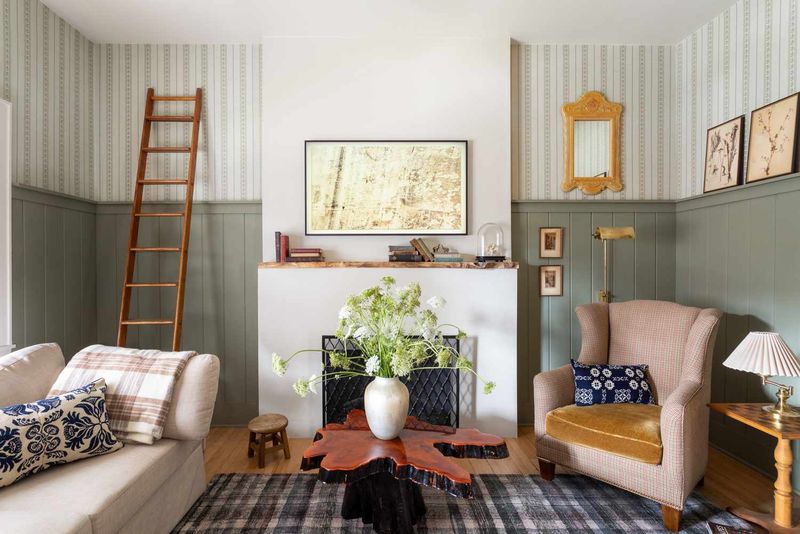
Halfway up many craftsman walls runs a chair rail, dividing painted plaster above from rich wood paneling below. This wainscoting adds visual weight to rooms while protecting walls from chair damage – practical beauty at its finest.
Some grander homes feature full wood paneling in quarter-sawn oak. The distinctive ray fleck grain pattern catches light differently throughout the day. Homeowners report these wood-clad rooms maintain consistent temperatures, a natural insulation benefit.
7. Exposed Wood Columns And Room Dividers
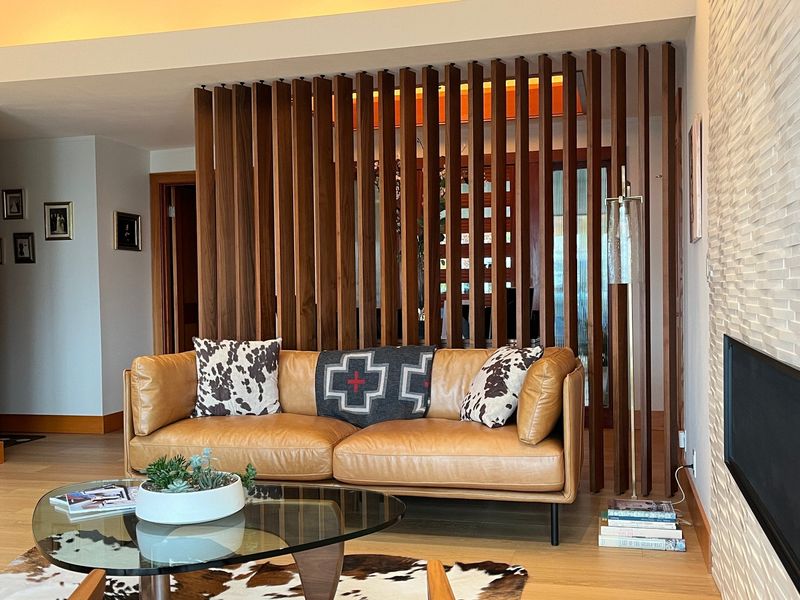
Graceful columns stand sentinel between living and dining areas in open-plan craftsman homes. These aren’t merely decorative – they’re structural elements honestly expressed, often featuring built-in glass-front cabinets for displaying fine china.
The tapered shape draws inspiration from classical architecture while remaining distinctly Arts and Crafts. Homeowners in historic districts particularly treasure these features, which create defined spaces without sacrificing flow or conversation between rooms.
8. Hardwood Floors With Vintage Area Rugs
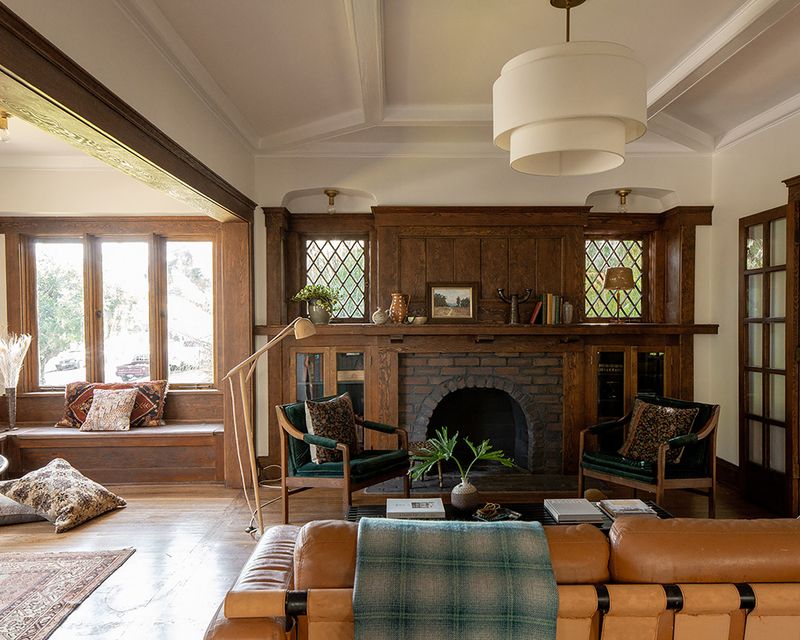
Douglas fir planks stretch across many Oregon craftsman floors, their amber tones deepening over a century of footsteps. Occasional squeaks – what restorers affectionately call “voice” – remind residents of the living history beneath their feet.
Vintage wool rugs soften these wood expanses, creating conversation islands. Many homeowners layer Craftsman-appropriate designs – geometrics, stylized florals, or Persian patterns – that echo colors from nearby stained glass or tile work. The combination feels both authentic and deeply comfortable.
9. Wood-Framed Windows For Natural Light
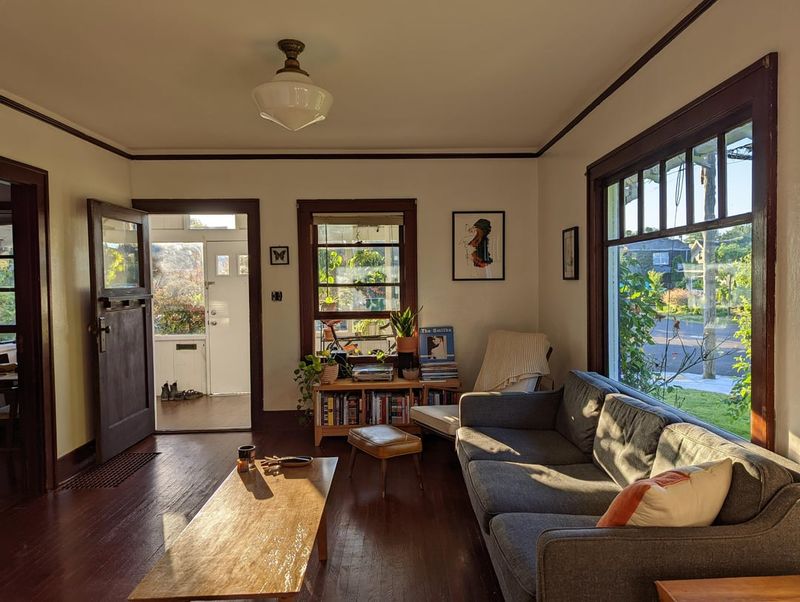
Morning sunlight streams through divided-light windows, creating geometric patterns across Craftsman living rooms. Unlike modern replacements, these original windows feature true divided lights – individual glass panes held by wood muntins.
Many homeowners have preserved these windows despite energy concerns. They’ve found creative solutions like interior storms or careful weatherstripping. The reward? Authentic wavy glass that casts dancing rainbows on walls and irreplaceable wood frames with perfect proportions.

